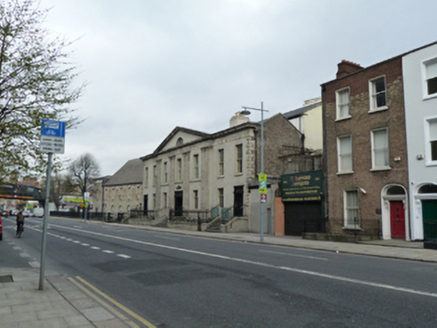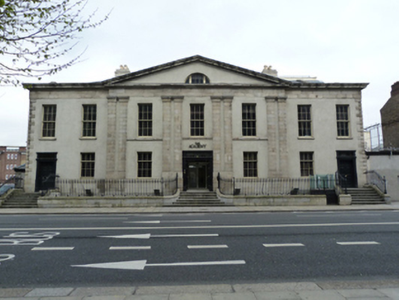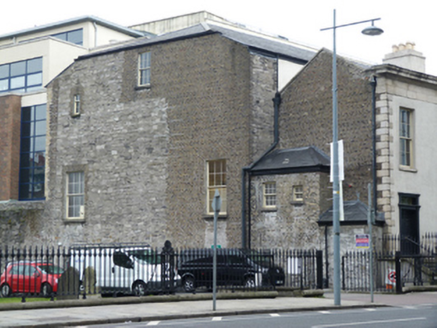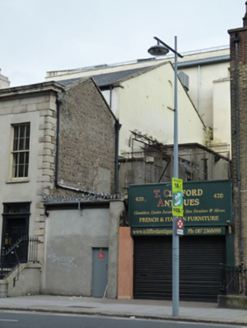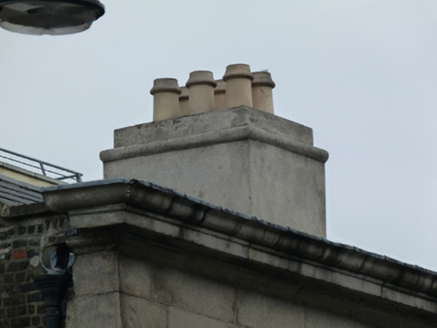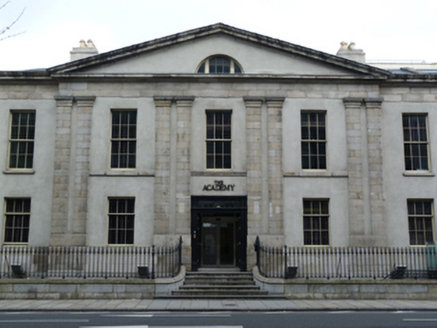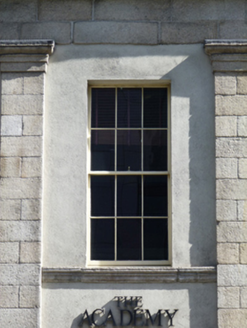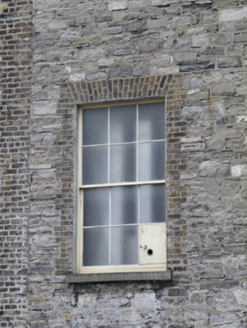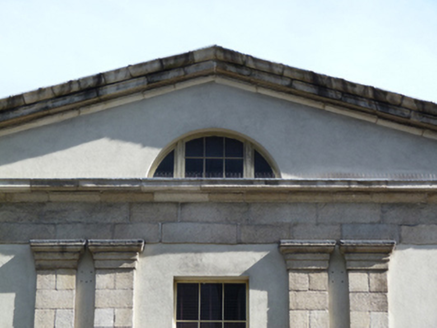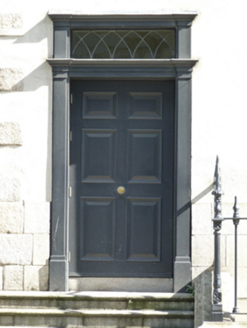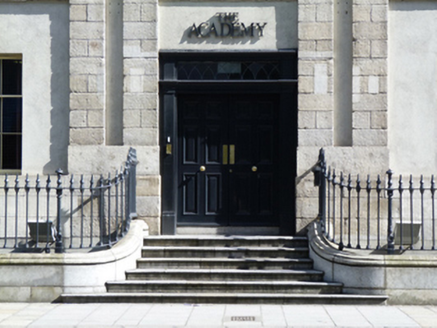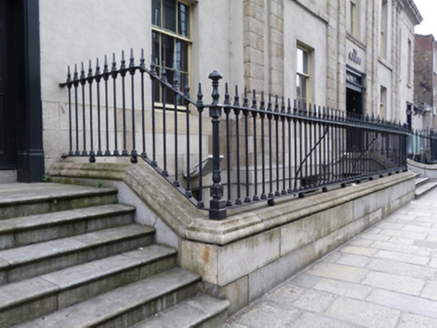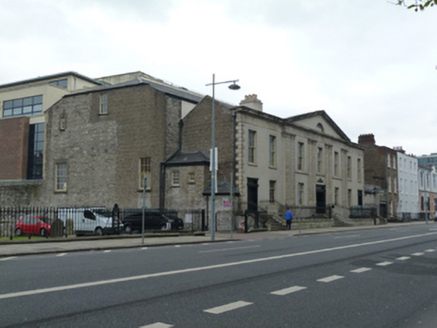Survey Data
Reg No
50020353
Rating
Regional
Categories of Special Interest
Architectural, Artistic, Cultural, Historical, Social
Previous Name
Dublin Oil Gas Company / Society of Ancient Concerts
Original Use
Office
Historical Use
Cinema
In Use As
Office
Date
1820 - 1825
Coordinates
316594, 234096
Date Recorded
24/04/2015
Date Updated
--/--/--
Description
Detached seven-bay two-storey over basement office building, built 1824, with attic accommodation and thee-bay pedimented central breakfront to front (south) elevation, fronting former factory to rear (north) elevation. Later was used as concert hall and cinema. Now in use as offices. M-profile pitched slate roof, half-hipped to west end to rear, rendered chimneystack having clay pots, cast-iron rainwater goods. Carved granite entablature and cornice over smooth rendered walls with paired pilasters to breakfront, granite quoins and rendered walls to basement to front, brown brick laid in English garden wall bond and squared rubble limestone walls to east and west elevations. Square-headed window openings having granite sills and replacement timber sliding sash windows, those to west elevation with brick surrounds. Diocletian window opening having cornice forming continuous sill course to apex of pediment. Square-headed door openings with replacement timber doorcases, replacement leaded overlights and replacement single- and double-leaf timber panelled doors. Replacement mild steel railings on carved granite plinth wall, enclosing basement area. Nosed granite steps to doors. Located to north side of Pearse Street.
Appraisal
A striking building on Pearse Street which has served many uses. Originally designed by J. Cooke in 1824 for the Dublin Oil Gas Company, which provided gas for public lighting in the city. It comprised a factory fronted by an elegant Palladian office range. A rise in the cost of production put the company out of business and the premises became vacant in 1835. It was acquired by the Society of Ancient Concerts for use as a concert hall, and the interior and exterior were remodelled. Although it has lost much of its original fabric, it retains some early form and character. It became a fashionable spot for the city’s elite to hold theatrical and musical events. The tenor John McCormack made his concert debut here in 1904, at which James Joyce also sang. Joyce used the Ancient Concert Rooms as a setting for his short story ‘A Mother’, in Dubliners. In 1921 it was converted into a cinema and was subject to major alterations including the insertion of shopfronts to the ground floor. The façade is articulated by the central breakfront with paired Doric pilaster and Diocletian window. The render and granite dressing to the front elevation combined with brick and granite to the side elevation provide textural variation.
